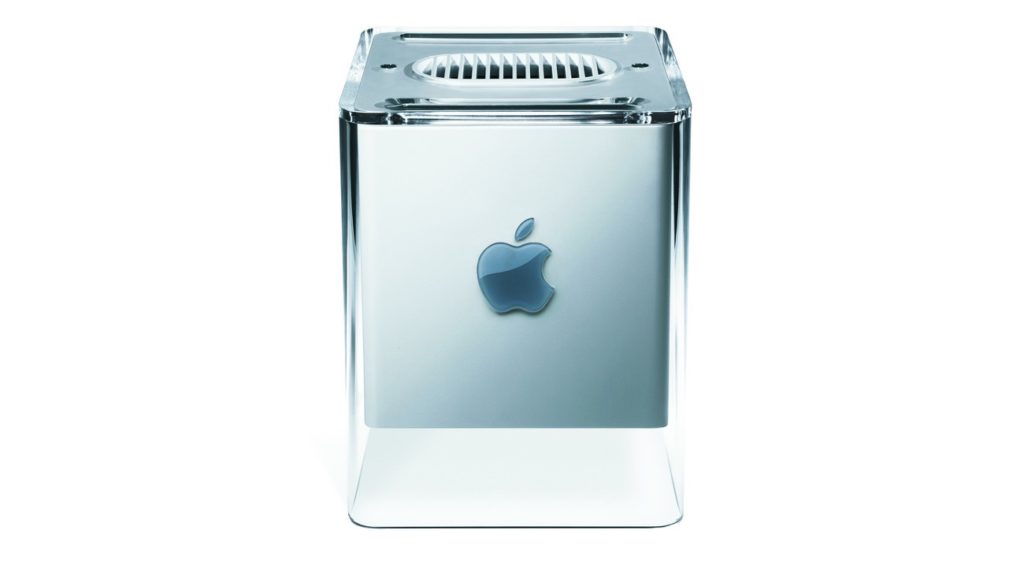
Whilst we associate Steve Jobs with success, the road to reach it was just as long for him as for everybody else. Thankfully, we don’t have to make the same mistakes if we just learn from his. One of the more interesting cases is the Power Mac G4 Cube. Let’s dive in.
The Power Mac G4 Cube
July 19th marked the 20th anniversary of one of Apple’s most innovative and ground-breaking products ever – the Power Mac G4 Cube. The G4 was quite the beast to behold. It debuted in July 2000, showcasing a number of features that are now standard in most computers, but which were new at the time. If you’re wondering why you can’t immediately bring an image of this revolutionary device to mind, don’t worry – you’re not alone.
The reason why you can’t recall the G4 Cube is because it was far from successful. In theory, the G4 had all the makings of a ground-breaking new piece of technology. As the name implies, the G4 was housed in a plastic cube casing. By using transparent plastic, Jobs enabled the user to look inside the machine and see all the bits and pieces at work.
When Jobs introduced the G4 to the world, he stressed how powerful it was despite being air-cooled. Jobs hated fans in electronics, and it was important that the device’s beauty wouldn’t be spoiled by the noise of a jet engine when the G4 was under strain. Instead of a physical power button, the user could simply wave his hand in front of the device to turn it on.
Segmenting Your Audience
On paper, the G4 Cube had everything that it needed to be a successful product. So why did it fail? The answer is actually quite simple; Steve Jobs simply forgot who he was selling to. You see, while the G4 Cube had plenty of excellent features, those features came at quite a substantial cost. Being able to turn the device on and off with a wave of the hand is definitely cool, and the CD drive, which was entirely internal and had no external moving parts, was revolutionary for the time. But those quality-of-life improvements added to the price tag of the cube, which made it too expensive for many potential clients.
Now clearly, a steep price is not usually an obstacle for an Apple product looking to find its audience. However, in the case of the G4 Cube, it wasn’t exactly clear who it was for, even among Apple users. Despite being much more expensive than the low-end iMac, the G4 Cube lacked many of the advanced power features of the high-end Macs that professionals would have been interested in. Let’s not forget the cost of a display, as the cube needed to be hooked up to an external display unlike many other Apple computers.
Essentially, the problem that the G4 Cube had was that Jobs was trying to aim it at several different segments of his audience simultaneously. This approach led to a device that pleased and appealed to no one.
Steve’s Tips For Engaging An Audience
Jobs learned several valuable lessons from the experience of launching the G4 Cube. What stands out is the G4 presentation because it’s a rare example of a Steve Jobs presentation going poorly. Apple had other flops, but few on the scale of the G4. Subsequent presentations were much better because Jobs learned valuable lessons from the G4 misstep.
First of all, any product presentation should start strong and aim to hit home as soon as possible. A good presentation will grab the audience’s attention and get them on your side immediately. This can be done by using bold and emotive language, both of which immediately engage the audience.
If you use visual aids in your presentations, then you should keep them as simple as possible. You don’t want your audience deciphering a complex visual image when they should be listening to what you are saying. Ideally, your visual aids should also be helping your audience to picture themselves owning and using your product.
A successful product launch also requires an awareness of what your competitors are doing. Thanks to web scraping, it is now relatively easy to gather a range of data about your competitors with very little effort. Once you know what your competitors are planning to do, you will have the opportunity to gain an upper hand.
The fact that even Steve Jobs forgot something as fundamental as defining his target audience illustrates that we are all susceptible to these human errors. You cannot plan a new product launch if you don’t know who you are aiming your product at. Make sure that you have a clear definition of your target audience before you start planning your launch in detail.









